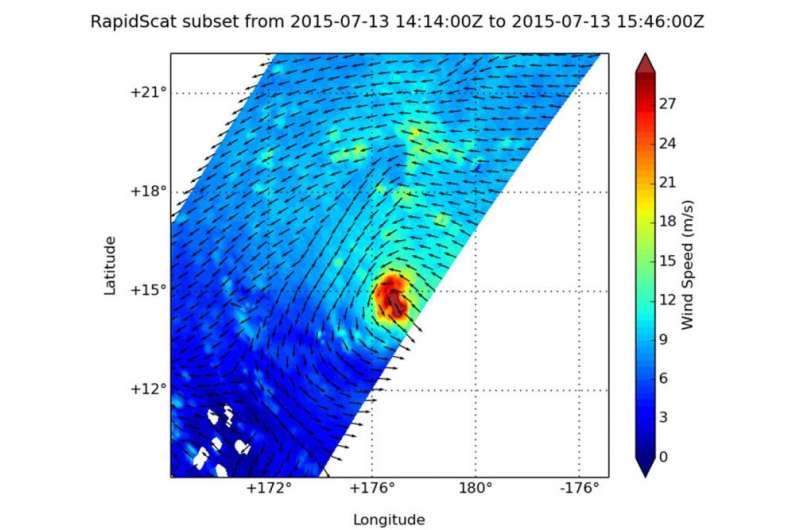RapidScat measures Typhoon Halola's concentrated winds

Typhoon Halola's typhoon-force winds are tightly concentrated around its center. The RapidScat instrument that flies aboard the International Space Station measured those powerful winds.
RapidScat gathered surface wind data on the Typhoon Halola on July 13 from 14:14 to 15:46 UTC (10:14 a.m. to 1:46 p.m. EDT). RapidScat data showed that the strongest sustained winds were concentrated around the center of circulation and were near 30 meters per second (108 kph/67 mph). Those typhoon force winds only extended 15 nautical miles from the center of circulation, making Halola a very compact storm.
At 0900 UTC (5 a.m. EDT) on July 14, Typhoon Halola's maximum sustained winds had increased to near 85 knots (97.8 mph/157.4 kph). It was centered near 15.7 North latitude and 174.4 East longitude, about 496 nautical miles (570.8 miles/918.6 km) east-southeast of Wake Island. Halola was moving to the west-northwest at 12 knots (13.8 mph/22.2 kph).
Halola is moving west-northwest and is expected to pass just south of Wake Island on July 16. The Joint Typhoon Warning Center forecast calls for the storm to slowly intensify to 115 knots (132.3 mph/213 kph).
Provided by NASA's Goddard Space Flight Center





















